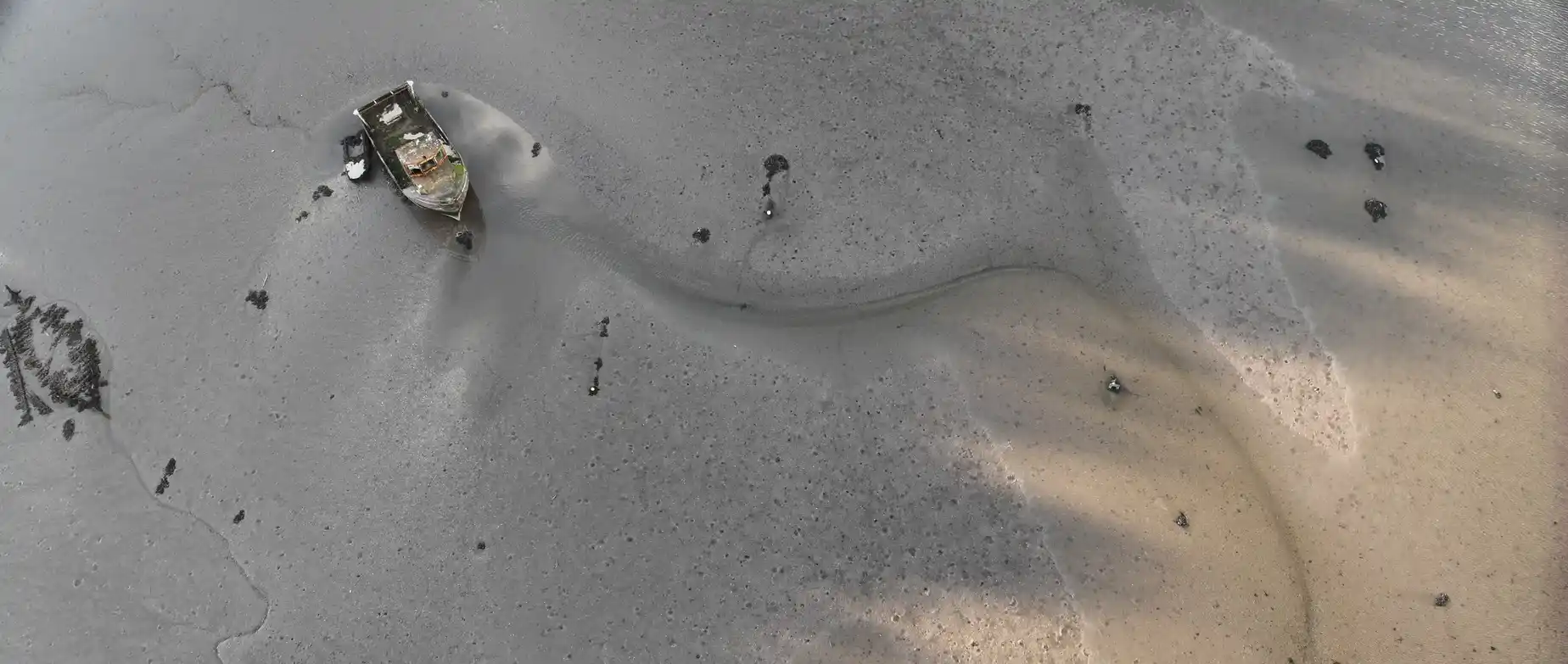Projects
(DMAND) Unmanned Marine Mapping and Monitoring for Offshore Energy
DMAND develops fully unmanned workflows using swarms of micro-AUVs to map and monitor Ireland’s seafloor. The project will reduce survey costs and environmental impact while delivering critical insights for offshore renewable energy planning.
Digital Environmental Technology for Enhanced Coastal Zone Management (DETECT)
This project utilises novel multispectral 3D structure-from-motion photogrammetry, machine learning and numerical modelling to create a digital twin framework that supports environmental decision-making and policy development with a focus on vulnerable coastal habitats in Ireland.
Seagrass mapping to assess natural stocks of blue carbon (SEAMANS_Carbon)
SEAMANS_Carbon is an integrated mapping and monitoring research program between Irish and Belizean partners to help assess the current state of blue carbon in Belize while providing management-informing data. The project uses multispectral UAV data to map the distribution of Belizean blue carbon habitats as well as retrieve and analyse sediment cores from these areas to make an assessment on their carbon stock. We assess one of their most widely-used fishing methods (‘shades’) to determine its impact on blue carbon stock and provide an insight to how the practice may be refined to have less impact on the sequestration of carbon.
Instability and Pollution Potential Mapping of Irish Shipwreck Sites for a National Risk Assessment Database (I-PoINt)
Shipwrecks are anthropogenically derived seafloor features with important cultural heritage that may form biodiversity ‘hotspots’ in otherwise barren parts of the seabed. In recent times, their presence has typically been considered a hazard to trade and navigation (shipping routes), energy (renewable energy development) and marine resources (trawling). However, a relatively lesser studied hazard is the pollution potential of shipwrecks given their composition, cargo and long-term exposure to the marine environment that can up-concentrate shipwreck-derived pollutants akin to placer deposits. This is a multi-disciplinary, multi-institutional research project that: i) identifies, maps and ranks the distribution of polluting shipwrecks around Ireland, and; ii) quantifies the impacts of the most intensely polluting
Mapping optimal submarine cables routes for Offshore Windfarms
This project proposes to utilise high-end geospatial analyses to identify the optimal route selection for offshore cables, supporting our understanding of the geomorphology and potential geohazards associated with these environments. This research will focus on proposals in the south and west coasts of Ireland, as these areas are under the most intense development for offshore windfarms.
An Enhanced Angular Range Analysis workflow with backscatter and magnetometry for wider industrial impact and uptake of INFOMAR data
This project aims to apply an new, enhanced Angular Range Analysis (eARA) work to 6 broad areas of INFOMAR data: deep (+700 m); intermediate (400 m); shallow (200 m) and 3 areas of interest to ORE developers in the North Celtic Sea (ranging from 100 to 20 m). The project has 2 overall aims:
Aim 1: To develop a more industry-aligned and robust sediment classification workflow that elucidates the control of differing multibeam sonars and acquisition parameters specific to INFOMARs existing database and;
Aim 2: To determine the accuracy and feasibility of upscaling such a method across the INFOMAR database (~20 years’ worth of data).
Evaluating COnsequences of SEAweed farming on SEAgrass ECOsystems at the turneffe atoll marine reserve (ECOSEA_SEAECO)
The ECOSEA_SEAECO project will aim to develop a synergistic workflow using remote sensing techniques created within its sister project SEAMANS_Carbon and water sampling data to determine the influence of seaweed farming has on seagrass habitats in the Turneffe Atoll Marine Reserve (TAMR) in Belize.
The development and impact of VR fieldtrips on Geoscience Curricula
This project builds on and further develops virtual reality (VR) fieldtrips with real world scales and geographic co-ordinates that not only gives access to people globally and the excluded demographic mentioned above but can also act as an aid for pre-fieldtrip investigations. The project aims to create and tailor VR fieldtrips and determine the impact of learning through VR on student learning.
Novel high-resolution spatio-temporal monitoring of cold water coral reefs
This project aims to carry out preliminary analysis of 2D and 3D data from deep water coral reefs in support of a larger proposal.
OpenMag
This is an on-going Magnetometry data and software project.
3D Photogrammetry of cold water coral mounds
This project aims to construct 3D models of a number of CWC mounds that display differing characteristics across an environmental gradient. These 3D models will then be analysed to investigate ecological distribution across this gradient and at a mound scale. Methodological approaches towards building 3D models of this habitat will be consistent with those utilised in existing literature et al., (Lim et al.2020, de Oliveira et al., 2022).
Towards inclusive, open access, virtual reality geoscience fieldtrips for teaching and research enhancement
Here we propose a project that creates a series of virtual reality (VR) field experiences that allow students to gain critical field skills.
This project has aims to:
- a) Create a VR fieldtrip workflow using open source/easily accessible equipment and software;
- b) Generate a suite of VR field experiences from areas of scientific and societal interest to UCC curricula and;
- c) Increase the awareness of VR field experiences as a tool for the physically-, financially-, or otherwise constrained demographic.



